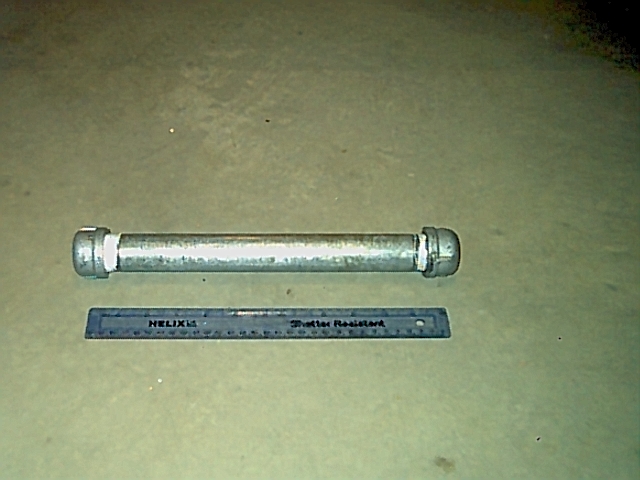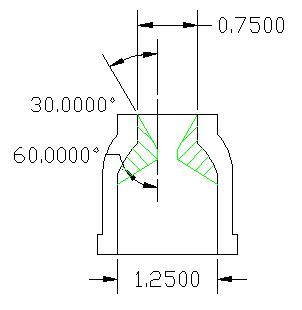Aries
|
11/15/01 After weeks of preparation my newest project was ready today. This new project was a rocket different from all of my past engines. So what's so great about this rocket you ask? Well lets just say it's a 12" by 1" fire spitting behemoth. The casing was made of a 1" by 12" steel nipple available at all hardware stores. The bulk head consisted of a screw on end cap and the nozzle was made of the same thing, but I drilled a 1/4" hole for the nozzle throat. This is just a temporarily permanent device till I can machine a nozzle. I also wrapped some Teflon tape around the thread of both end to prevent gases to leak thorough the thread. The fuel consisted of Potassium Nitrate (KNO3) and Fructose. These two ingredients were mixed with a ratio of 2 to 1 or 66% to 33%. The ingredients were mixed in a ziplock bag. To cast the propellant they are melted over a low flame while stirring constantly. If you don't stir it constantly the fructose will caramelize and performance will be reduced. To melt the propellant I used a Coleman propane stove, it is very convenient since it can be used out side so I don't upset my mother by heating up rocket fuel in the kitchen. Once adequately melted the propellant in poured into the casing with the bulkhead already attached. To form the core I used a 1/2" piece of dowel rod, I spin it frequently so it doesn't get "glued" in place by the propellant After the propellant set up, only and hour or so, the core rod it removed and the nozzle is then screwed on tightly. |


